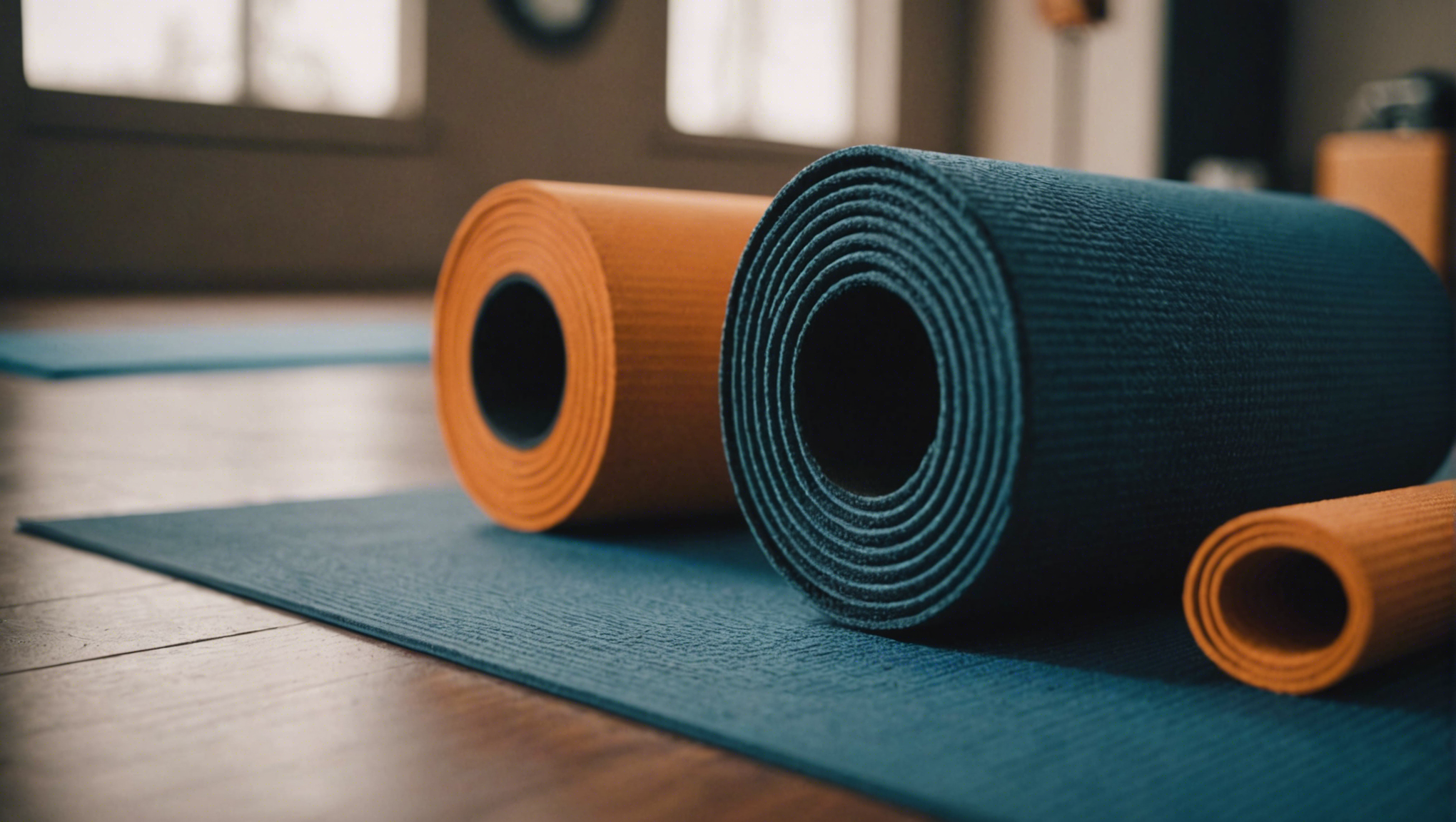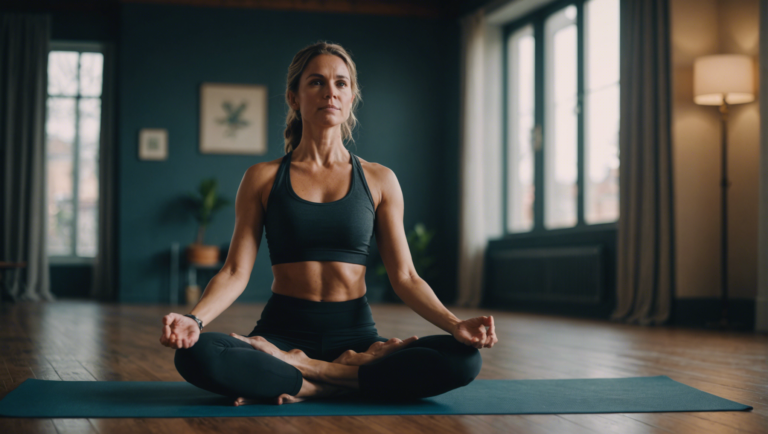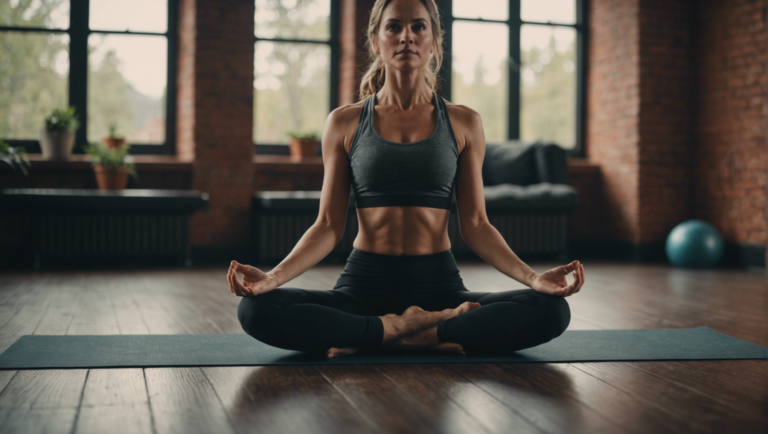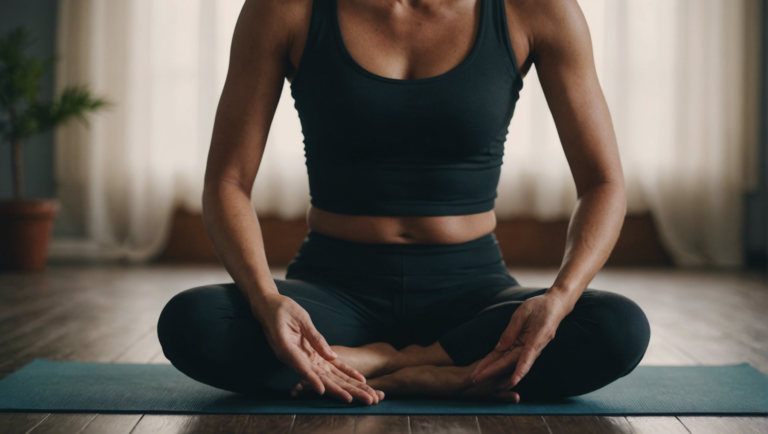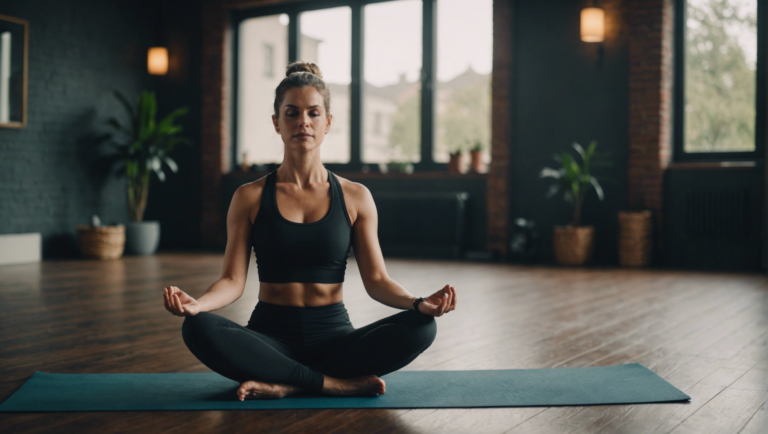Which Yoga Mat Should I Buy? A Comprehensive Guide
Deciphering the Perfect Yoga Mat for You: A Deep Dive into Options
Selecting the right yoga mat is akin to picking a companion for your journey toward wellness and tranquility. The myriad of options available can make this seem like an overwhelming task, yet understanding the specifics can guide you to an ideal choice that aligns with your personal practice, values, and lifestyle. Let’s embark on an exploration to unveil the perfect mat for your yoga adventures.
Decoding the Material Maze
When it comes to yoga mats, the material isn’t just about texture; it’s about performance, sustainability, and comfort. The traditional PVC mats offer durability and strong grip, but if eco-friendliness is high on your list, options like natural rubber, cork, and jute are commendable. Natural rubber mats provide excellent grip and cushioning, albeit with a slight rubbery smell that fades over time. Cork mats, beloved for their natural antimicrobial properties, deliver a unique texture that improves grip when wet, making them excellent for those intense, sweaty practices. Jute mats, while slightly rougher, blend eco-consciousness with functionality, offering a tactile surface that promotes stability.
Thickness and Weight: Balancing Comfort and Portability
The thickness of your yoga mat has a direct impact on its comfort and portability. Standard mats typically range from 1/16 inch (ultra-thin travel mats) to 1/4 inch (thick mats for cushioning). A thicker mat can provide necessary relief for knees and wrists during more demanding poses but may sacrifice stability for standing and balancing asanas. Conversely, thinner mats, while less cushioned, are lighter and enhance your connection to the floor, making them ideal for more dynamic practices and easier transport.
Size Matters: Finding Your Fit
Not all yogis are built the same, and neither are all yoga mats. Length and width can significantly affect your overall practice. Standard mats run about 68 inches long, but taller individuals may find extended lengths of up to 84 inches more accommodating, allowing full expression in every pose without running off the edge. Similarly, while most mats are 24 inches wide, some offer extra width for those seeking more room to flow.
Texture and Grip: Enhancing Your Practice
The texture of a yoga mat influences both its physical feel and its grippiness. Mats with more texture offer better traction, which is essential for maintaining poses and alignment without slipping. However, the right balance is crucial; overly textured mats can be uncomfortable during longer sessions. Similarly, grip plays a vital role, especially in dynamic or hot yoga classes where sweating can compromise stability. Some materials, like natural rubber, inherently provide a better grip, while others are treated to improve their stickiness.
Embracing Sustainability
In an era where environmental consciousness is paramount, selecting a mat that reflects sustainable practices can enhance the spiritual fulfillment yoga brings. Mats made from renewable resources like natural rubber or recycled materials offer a greener footprint. Brands that prioritize eco-friendly manufacturing processes and give back to environmental causes add an extra layer of purpose to your purchase.
Navigating the Price Spectrum
Investing in a quality yoga mat can elevate your practice, but it doesn’t necessarily have to break the bank. While premium mats can offer advanced features like superior grip, optimal cushioning, and eco-friendly materials, there are also budget-friendly options that meet basic needs. Consider your practice intensity, frequency, and specific requirements when choosing—remember, a higher price tag doesn’t always equate to a better fit for your practice.
Embarking on the journey to find the perfect yoga mat is a step towards deepening your practice. By considering factors such as material, thickness, size, texture, sustainability, and price, you can select a mat that not only supports your physical practice but also aligns with your values and lifestyle. Remember, the ideal mat is the one that feels like an extension of your practice space, grounding you in your asanas while uplifting your spirit.
Material Matters: Exploring the Composition of Yoga Mats
Navigating the World of Yoga Mat Composition
When embarking on the journey of yoga, one of the first and most crucial decisions you’ll encounter is selecting the right yoga mat. The composition of yoga mats significantly influences both the practice and the practitioner’s comfort, making an understanding of the materials involved essential. This guide delves into the various materials used in yoga mats, providing insights to help you make an informed decision tailored to your personal yoga journey.
The Significance of Material Choice in Yoga Mats
Yoga mats serve as the foundation of your practice, offering comfort, stability, and a personal space for meditation and exercise. The material of your yoga mat can affect your grip, how it feels underfoot, its durability, and even its environmental impact. Thus, selecting a mat goes beyond color and pattern; it’s about finding the right material that aligns with your practice, values, and needs.
Natural Rubber Yoga Mats: Eco-Friendly and Supportive
Natural rubber yoga mats are prized for their sustainability and non-toxic nature. Derived from rubber trees, these mats offer a supportive and cushioned surface, ideal for those practicing more dynamic styles of yoga. The open-cell structure of natural rubber provides excellent traction, even in the sweatiest conditions. However, individuals with latex allergies should consider other options, as natural rubber can trigger allergic reactions.
TPE (Thermoplastic Elastomer): The Synthetic Blend
TPE yoga mats represent a blend of plastic and rubber, offering a middle ground between natural rubber and PVC mats. Lightweight and with a closed-cell structure, TPE mats are generally more affordable and still provide a decent grip. They are also more environmentally friendly than PVC mats, as TPE is partially recyclable. Their cushioning and resilience make them suitable for those who need extra joint support.
PVC (Polyvinyl Chloride): Durability Meets Affordability
PVC yoga mats are the most common and can be found in many gyms and studios. Their popularity stems from their affordability, durability, and ease of cleaning. PVC mats often have the best sticking power, providing a stable surface for all kinds of poses. However, environmental and health concerns have been raised about PVC, as it releases toxins during manufacture and at the end of its lifecycle. Those seeking eco-friendly options may need to look elsewhere.
Cork Yoga Mats: Sustainable and Antimicrobial
Cork yoga mats stand out for their natural, renewable material that offers unique benefits. Cork is naturally antimicrobial, repelling bacteria, mold, and odors, making it an excellent choice for yogis prioritizing cleanliness. Additionally, cork provides a non-slip surface that improves with moisture, making it ideal for hot yoga practitioners. The material’s sustainability and lightweight nature add to its appeal, offering a guilt-free, high-performance option.
Jute: Nature’s Answer to Slip-Resistance
Jute yoga mats are another eco-friendly alternative, woven from the fibers of the jute plant. Known for their rough texture, these mats offer superior grip and durability, ideal for those who practice more vigorous yoga styles. Jute mats are often combined with PER or natural rubber to enhance cushioning. Their biodegradable nature and unique aesthetic make them a favored choice for environmentally conscious yogis seeking a mat with a natural feel.
: Aligning Material with Practice
Selecting the right yoga mat material involves a balance of personal needs, ethical considerations, and the type of yoga practice. Whether you prioritize eco-friendliness, cushioning, durability, or grip, there is a material out there that meets your requirements. Take the time to consider how each material aligns with your yoga journey. Remember, the right yoga mat is an investment in your practice, your comfort, and potentially, the planet.
The Impact of Thickness and Texture on Your Yoga Practice
Selecting the perfect yoga mat might seem straightforward, but the nuances of thickness and texture play a pivotal role in enhancing or detracting from your yoga experience. Understanding how these elements influence your practice is essential for both novice and seasoned practitioners aiming to make an informed purchase.
Unveiling the Significance of Yoga Mat Thickness
The thickness of a yoga mat can profoundly impact your comfort and stability during practice. Generally, yoga mats range from a thin 1/16 inch (about 1.6 mm) to a plush 1/4 inch (about 6.4 mm). Each thickness serves a specific purpose and caters to different styles of yoga and practitioner needs.
For Travel and Balance-Focused Practices: A thinner mat, typically around 1/16 to 1/8 inch (1.6 to 3.2 mm), is ideal for those who prioritize portability or practice balance-intensive styles like Vinyasa or Ashtanga. These mats offer a solid connection to the ground, enabling more stable footing during challenging poses. However, the reduced cushioning might not be suitable for those with sensitive joints or when practicing on hard surfaces.
For Comfort and Restorative Sessions: On the other end of the spectrum, mats that are 1/4 inch thick provide luxurious cushioning, which can be especially comforting during slower, restorative sessions or for practitioners with knee or wrist issues. The added padding supports prolonged poses and kneeling positions. Nevertheless, thicker mats can sometimes compromise stability in balance poses and are generally heavier, making them less convenient for travel.
The Impact of Yoga Mat Texture on Practice
Texture not only contributes to the aesthetic appeal of a yoga mat but also its functionality. The surface texture affects traction, influencing how well you can hold poses and maintain alignment without slipping.
Smooth Mats: Mats with a smooth surface tend to offer less grip, which can be challenging during sweaty practices like Hot Yoga or high-intensity sequences. However, they are often easier to clean and can be comfortable against the skin for gentler sessions or meditation.
Textured Mats: A mat with a raised or textured pattern offers increased grip, helping to prevent slipping in more dynamic or perspiration-prone practices. The texture can range from subtle bumps to more pronounced ridges, catering to various preferences for tactile feedback. While these mats can enhance stability and safety, they might be slightly more difficult to clean and less comfortable for prolonged contact.
Balancing Thickness and Texture for Your Needs
Choosing the right combination of thickness and texture is about finding balance between comfort, stability, and the type of yoga you practice most often. Consider the following when making your selection:
-
Personal Comfort and Joint Sensitivity: If you have sensitive joints or prefer a more cushioned base, opt for a thicker mat. However, if balance poses are a significant part of your practice, a thinner mat may be more suitable.
-
Practice Intensity and Location: High-intensity or sweat-inducing practices may require a mat with more texture for added grip, whereas a smooth mat could suffice for slower, more meditative sessions.
-
Portability Requirements: For yogis on the go, a lighter, thinner mat is ideal. If your mat will mostly reside at a home or studio, a thicker and possibly textured option could provide enduring comfort.
Ultimately, the path to choosing your perfect yoga mat involves a blend of practical considerations and personal preferences. By understanding the key roles thickness and texture play in your practice, you can select a mat that not only supports your physical needs but also enhances your spiritual journey. Your practice is unique, and your yoga mat should be a reflection of that—supporting every pose, breath, and moment of relaxation.
The Significance of Sustainability in Selecting a Yoga Mat
As yoga continues to weave its way into the fabric of global wellness practices, the demand for yoga accessories, particularly yoga mats, has surged. Among the factors influencing the selection of a yoga mat, sustainability emerges as a significant criterion for an ever-growing segment of the yoga community. This focus mirrors the broader societal shift towards environmental responsibility, recognizing that the choices we make, including those related to our yoga practice, have far-reaching implications for the planet.
Why Sustainability Matters in Your Yoga Practice
Sustainability in yoga mats pertains not only to the materials from which they are made but also to the manufacturing processes and the lifecycle of the product. Traditional yoga mats, often crafted from PVC (polyvinyl chloride), pose numerous environmental concerns, primarily due to their non-biodegradable nature and the toxic chemicals released during manufacturing and disposal. As practitioners embrace yoga’s principles, which advocate for harmony with oneself and the environment, the push towards eco-friendly yoga mats becomes a natural extension of this philosophy.
Eco-conscious mats are typically made from natural rubber, jute, organic cotton, or recycled materials, offering a greener alternative to their PVC counterparts. These materials are renewable, biodegradable, and often sourced through sustainable practices, significantly reducing the ecological footprint of your yoga mat.
Navigating the Green Yoga Mat Market
When embarking on the quest for a sustainable yoga mat, the vast array of options can be overwhelming. Here are several key aspects to consider:
-
Material: Look for mats made from natural or recycled materials that are sustainably sourced. Natural rubber, for instance, provides excellent grip and cushioning, while being biodegradable. However, those with latex allergies should seek alternatives like TPE (thermoplastic elastomer) or cork.
-
Certifications: Certifications such as OEKO-TEX, GOTS (Global Organic Textile Standard), or FSC (Forest Stewardship Council) can guide you towards products that meet stringent environmental and health criteria.
-
Lifespan and Recyclability: Consider the durability of the mat and its end-of-life options. Some companies offer recycling programs for their mats, while others design them to be compostable.
-
Manufacturer Ethics: Investigate the manufacturing practices of the company. Transparency in sourcing, labor conditions, and the overall ethos of the brand are indicative of their commitment to sustainability.
The Broader Impact of Your Choice
Selecting a sustainable yoga mat transcends mere consumer preference, embodying a gesture of responsibility towards the planet. Each eco-friendly mat purchased is a step towards reducing pollution, conserving natural resources, and promoting a more sustainable economy. Moreover, by supporting brands committed to environmental stewardship, consumers can drive the demand for green products, encouraging more companies to adopt sustainable practices.
Enhancing Your Practice with Sustainability in Mind
Transitioning to a sustainable yoga mat can also deepen your connection to your practice. This tangible representation of your commitment to yoga’s ethical foundations can add a layer of intention and mindfulness to your routine, reinforcing the unity between your personal values and your physical practice.
Choosing a sustainable yoga mat, therefore, is not merely a practical decision but a manifestation of the yoga principle of ahimsa, or non-harm, extending compassion and respect to the world around us. As we roll out our mats, we are reminded of the impact of our choices and the potential for yoga to inspire positive change, both internally and in the wider world.
Final Thoughts on Embracing Sustainability
The journey towards sustainability is ongoing and evolving. As the yoga community continues to grow, so too does its influence on the global push for environmental sustainability. By prioritizing eco-friendly yoga mats, practitioners can contribute to this movement, making each asana a statement of support for a healthier, more sustainable planet.
The significance of sustainability in selecting a yoga mat encapsulates a broader imperative: to live, choose, and practice in ways that honor and preserve the world we inhabit. In this light, the yoga mat becomes more than just a surface for practice—it becomes a symbol of our interconnectedness with nature and our collective responsibility to protect it.
Care and Maintenance: Ensuring Longevity of Your Yoga Mat
Yoga enthusiasts understand that their mat is more than just a piece of equipment; it’s a companion on their journey towards physical health and mental well-being. However, without proper care and maintenance, even the highest quality yoga mats can quickly deteriorate. The longevity of your yoga mat greatly depends on the attention you give to its care. Below, we offer you an expert guide on maintaining your yoga mat, ensuring it remains a supportive and clean foundation for your practice for years to come.
Daily Cleaning Rituals for Your Yoga Mat
Yoga mats absorb a lot of sweat, oil, and grime during practice. A daily cleaning ritual can prevent the buildup of odors and bacteria. Simply wiping your mat with a damp cloth after each use can make a significant difference. For a deeper clean, mix a few drops of mild soap with water in a spray bottle and lightly spritz your mat, wiping it off with a soft, dry cloth. Ensure the mat is completely dry before rolling it up.
Weekly Deep Cleans for a Fresh Start
In addition to daily spot cleaning, scheduling a weekly deep clean can help maintain the integrity of your yoga mat. Prepare a solution of mild detergent and lukish water, submerge a soft cloth in the mixture, and gently wipe the surface of the mat. Avoid using harsh chemicals or abrasive sponges that can damage the mat’s material. After cleaning, rinse the mat with clean water and air dry it thoroughly before storage to prevent mold and mildew.
Storing Your Mat Properly to Extend Its Life
How you store your yoga mat when it’s not in use can significantly affect its lifespan. Avoid leaving it in direct sunlight, as UV rays can degrade the material over time. Furthermore, keep it away from extreme temperatures which can cause the mat to become brittle or lose its shape. Rolling your mat loosely and storing it in a cool, dry place is advisable to prevent creasing and maintain its texture and grip.
Managing Odors Naturally
Yoga mats can start to smell over time due to the absorption of body odors and perspiration. To combat this, consider using a natural deodorizer such as a homemade spray made from water and a few drops of essential oil like lavender or tea tree, which possess natural antimicrobial properties. Spritz your mat lightly and let it air dry. This can leave your mat smelling fresh and help inhibit the growth of bacteria.
Repurposing Worn Yoga Mats
Eventually, all yoga mats begin to show signs of wear and tear, but that doesn’t mean their usefulness has come to an end. Consider repurposing your old mat instead of throwing it away. They can be cut into pieces and used as knee pads for gardening, slip-resistant pads under rugs, or even donated to animal shelters. Being creative with repurposing can extend the material usefulness of your yoga mat, contributing to environmental conservation.
Proper care and maintenance of your yoga mat enhance your yoga practice by providing a clean, stable, and comfortable surface. By incorporating daily light cleans, regular deep cleaning, appropriate storage, and effective odor management into your yoga routine, you significantly extend the life of your mat. Remember, a well-maintained yoga mat not only supports your physical practice but also reflects the respect and dedication you have towards your journey in yoga. Taking the time to care for your mat ensures that it remains a part of your practice for as long as possible, allowing you to focus solely on the path toward well-being.
Conclusion
Choosing the ideal yoga mat for your practice transcends mere aesthetics; it’s an investment in your physical health, environmental values, and overall well-being. As we’ve journeyed through the extensive options available, examined the variety of materials used in yoga mat construction, and considered the nuanced implications of thickness and texture, a clear picture has emerged: the perfect yoga mat is not a one-size-fits-all solution. The environmental considerations and care practices further accentuate the need for a well-informed choice.
The exploration of yoga mat options lays a foundation for understanding the diversity in functionality and experience that different mats offer. From ultra-thin travel mats that fit in your suitcase to thicker, plush mats that cushion your joints during a rigorous practice, the choice heavily depends on your personal needs, practice intensity, and the types of yoga you engage in. This variety ensures that whether you’re a seasoned practitioner or a beginner, there’s a mat that aligns with your yoga journey.
Diving deeper into the materials reveals the heart of what makes each mat unique. The shift towards eco-friendly materials reflects a growing consciousness within the yoga community about our environmental impact. Rubber, jute, and organic cotton offer sustainable alternatives without compromising on quality or performance. However, the choice of material doesn’t just affect the earth; it affects your practice too. The grip, durability, and even the smell of your mat can enhance or detract from your yoga experience, making material an essential consideration.
The discussion on thickness and texture brings to light the practical aspects of yoga mat selection. A mat’s thickness affects comfort, especially for those who have knee or joint pain, while the texture influences stability and grip during various poses. This highlights the importance of considering your particular health concerns and the types of yoga you prefer. A mat that’s too slick or too padded could turn a peaceful savasana into a source of stress, underscoring the need for a balance that caters to your unique practice.
Sustainability has surged to the forefront of the conversation, mirroring the yoga community’s dedication to mindfulness and environmental stewardship. The choice of a sustainable yoga mat is not just a personal preference but a statement of the values we wish to live by. By selecting mats made from renewable resources and produced through environmentally friendly processes, practitioners can align their yoga practice with the principles of compassion and non-harm.
The care and maintenance of a yoga mat play a crucial role in its lifespan and performance. Regular cleaning and proper storage can extend the life of your mat, ensuring that it remains a supportive and hygienic foundation for your practice. This aspect of yoga mat ownership not only encourages a routine of care and attention but also fosters a deeper connection to the practice itself.
In crafting this guide, the aim has been to illuminate the intricate web of considerations that come into play in selecting a yoga mat. It’s clear that the decision is as much about introspection and personal values as it is about practicality and performance. The perfect mat for you is one that supports your practice, reflects your environmental values, and withstands the test of time and use.
As you stand on the verge of making this choice, armed with knowledge and insight, remember that selecting a yoga mat is a step towards deepening your practice. It’s an invitation to engage with yoga on a level that transcends the physical, integrating principles of sustainability, mindfulness, and personal well-being into each pose and breath. Let your yoga mat be a reflection of your journey, a constant companion that supports and uplifts you as you explore the vast, transformative landscape of yoga.
